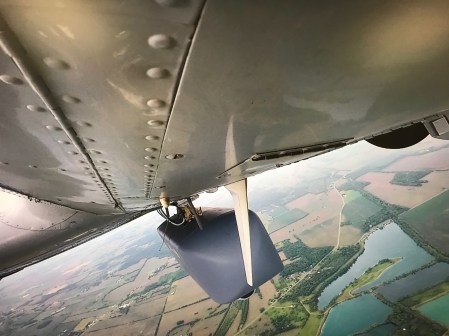Intelligence agency wants new tech to safeguard future SCIFs from foreign surveillance
Facing increasing eavesdropping and surveillance tactics from foreign adversaries, the Intelligence Advanced Research Projects Activity is reaching out to industry for new solutions to safeguard the government’s sensitive meeting sites.
IARPA issued a request for information Nov. 1 seeking innovative methods for securing Sensitive Compartmented Information Facilities, or SCIFs, from a variety of spying operations.
SCIFs are secure sites where government officials can view and discuss sensitive information, such as the White House Situation Room or the one set up at President Donald Trump’s Mar-A-Lago estate.
IARPA officials are calling for information on how to prevent surveillance attacks utilizing radio frequency, optical, magnetic or acoustic transmissions from intercepting communications within the SCIFs.
“Our adversaries continue to develop advanced tools and methods to enable technical surveillance attacks against sensitive U.S. facilities and personnel,” the RFI said. “These attacks are increasingly sophisticated and may exploit a variety of different sensors and data exfiltration paths. It is imperative that we are able to detect the operation and location of any adversarial sensors, whether concealed or hidden in plain sight and eliminate all possible transmission paths for exfiltration of data.”
Because future SCIFs could include wireless sensors and Internet-of-Things-enabled and mobile devices, agency officials want to target strategies to prevent adversaries from siphoning data from those devices, as well as blocking cyberattacks on technology within the facility.
“In the future, we may explore the authorized operation of wireless networks in or near sensitive areas; it is imperative that we develop appropriate technologies and methods to both secure these networks and prevent them from being exploited,” the RFI said. “Therefore, we strongly seek advanced concepts for securing wireless networks at the physical layer in addition to encryption used at the logic and application layers.”
IARPA officials are asking for solutions that can both shield signal-producing devices from data exfiltration but also ones that can detect listening devices on personnel or in their personal effects when entering a SCIF.
Industry officials are asked to provide their approaches to securing radio frequencies coming both into and out of SCIFs, safeguarding the facilities’ wireless networks and the surrounding areas from eavesdropping, and developing detection capabilities to protect against surveillance technology brought into secure sites.
Those interested have until Dec. 31 to respond.




